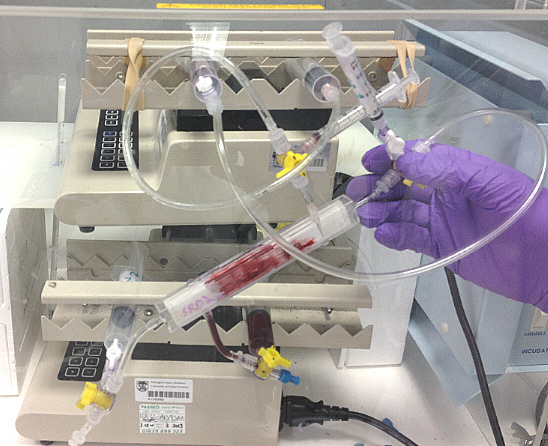
Blood Transfusion
Haemaflow has conducted research on blood transfusion since 2011. During this time, we have shown that rapid changes occur in the composition of stored blood with, for many of the components, over half the changes occurring in the first 5 days.

For some components, the changes can be dramatic. For example, normal potassium concentrations in blood are about 5 mmol/litre. Concentrations above 7 mmol/litre can be fatal. In some stored transfusion blood, potassium concentrations exceed 20 mmol/litre. When transfused into healthy people, the liver and kidneys remove such contaminants before damage arises.
However, in people who are unwell, the liver and kidneys are already working hard to maintain blood composition. For such patients, highly contaminated transfusion blood can damage the organs and make the patients susceptible to diseases ranging from pneumonia to septicaemia.
Murine studies have shown that the risk of pneumonia steadily increases with the age of the blood and human trials have shown that the risk of septicaemia increases steadily with the age of the blood.
Consequently, there is increasing interest in improving the quality of stored blood used for transfusion. We have developed devices for removing, or reducing, these contaminants and for restoring the composition to nearer that of fresh arterial blood. The devices are small and simple with no moving parts. The figure illustrates such a prototype device.
As an alternative to improving the quality of stored blood, we have investigated the possibility of reducing the rate at which stored transfusion blood deteriorates. At the same time, we have been undertaking tests to reduce the necessity for use of PVC plasticised with Di (2-ethylhexyl) phthalate (DEHP) for blood bags.
DEHP has been found to cause birth defects and cancer in animal trials and is now banned from applications apart from use in medical devices. It is used in blood bags both because it makes the bags more flexible and because it leaches from the bag into the blood where it diffuses to the red blood cells and reduces their tendency to fracture during storage.